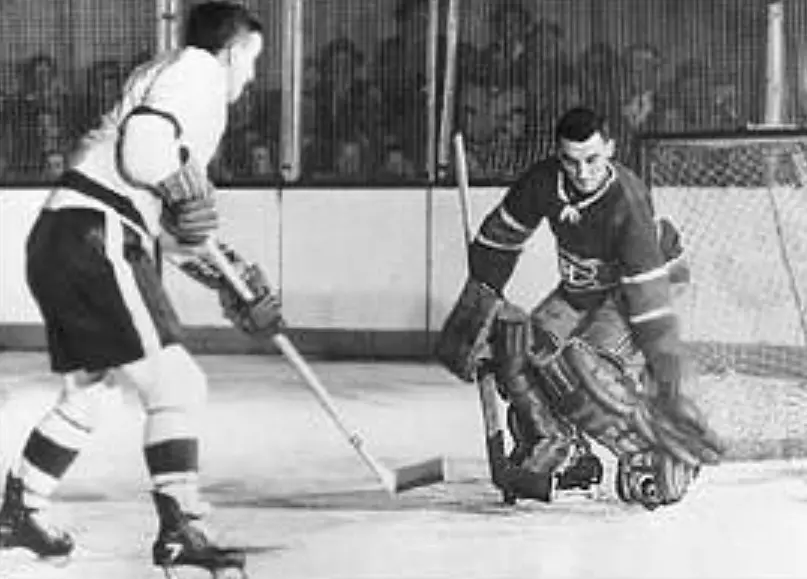Most hockey gear is the same on all players. Why do all women, no matter the level, wear a cage face mask?
Female hockey players wear cages because women’s hockey is considered an amateur sport. The higher up you advance in hockey, the fewer gear requirements there are. Only professionals are not required to wear cages.
Mots people assume women’s hockey has a professional league. While there are several leagues around the world, why are non of them considered professional?
What is the IIHF?
Glad you asked. The International Ice Hockey Federation, established in 1908, is the governing body of all international hockey play, and let me tell you- it gets really complicated from there. While there are many good things the IIHF provides for hockey players around the world, it is often confusing to figure out all the webs connected between the top leagues, including the Olympics.
As you can probably guess, there is friction between the NHL and the IIHF, especially when it comes to the Olympics and world tournaments. It comes down to rules, rink sizes, and of course money. We could write many posts about the IIHF, but we still stick to gear for this post. The IIHF states in section 6 of their official rules, “Full face masks, which meet approved international standards, shall be worn by all women ice hockey players.”
While this may come as a surprise to some, hockey players go their whole careers wearing full cages until graduating from college. Most women’s hockey leagues fall under the IIHF, thus you see them in full cages. Most NHL players will lose teeth, or have some kind of damage to their face over their career. Even though a full cage does not look as sharp or allow the best vision for the player, safety comes first. There is also no body-checking in women’s hockey to protect the players.
Embed from Getty ImagesAre there Equipment Differences Between Women and Men?
Men’s and women’s gear is unisex. Although equipment brands make two different lines, it basically fits the same. Be smart about wearing gear around the sensitive areas, but outside of that, you will be good to go.
You will find certain brands might make the chest or hips region more narrow or wider, but plenty of players wear both male and female branded equipment. Many women prefer to wear teenage gear, as it is a little smaller and size, and there is better availability and options on the market. The same goes for sticks. There are fewer options for women’s sticks, so you will find many women go to the teenage stick section. Smaller shaft made for smaller hands.
The point here is brands do not make many options for women to choose from. With small competition, comes cheap gear and higher prices. If more brands would produce women’s gear, manufacturers would be forced into competition, creating better quality gear at a reasonable price.
As an example, Pure Hockey is a well-known website that is a market place for hockey gear. The design of the website can be confusing, as gear marketed ‘Women’s’ is very limited. When you pull up the skates page, it has all the brands. When you click on a brand, it has youth, junior, and senior. It is not until you click on “View Size Chart” on a specific skate and scroll all the way down to the bottom of the page until you find how to buy if you are a female.
Pure Hockey is a great website and provides very good information to hockey players, but it shows an example how hockey is a male dominated sport. I am convinced we as a culture will get better, and make it easier for women to access gear. The NHL is already including popular women hockey players into their All-star weekends- a good step in the right direction!
Do Full Cages Inhibit Growth for Women’s Hockey?
In short, full cages does not inhibit the growth of women’s hockey. According to the IIHF between 2017 and 2018, the number of registered women’s hockey players grew by 25%. This is a remarkable step for the growth of women’s hockey. With the recent growth, comes new challenges and talks about rules changes.
If women’s hockey starting declining in popularity, the IIHF would look to make some rules changes to get the engagement level back up. For now, with hockey on the rise, the game is in a good spot.
Protecting the players’ faces is not a bad thing. When a piece of rubber is being shot towards you north of 50 mph, or in the NHL’s case, north of 100 mph, having all the protective gear possible is a good move. I think if you asked any player, not in the NHL, they do not mind having a little extra covering over their face.
Should the Full Cage Rule be Retired?
Here is another great question being discussed in hockey. Should any leagues outside professional men’s leagues allow players to wear visors instead of full cages? Yes, they should definitely take a look at it. With player safety being of utmost importance in today’s sports, it will be difficult to remove more equipment. No, the full cage should not be retired. Should other leagues take a look at removing the full cage rule? Yes.
The discussion revolved around the wisdom of player safety and giving players what they want. Ask any 16 year old if he would rather wear a cage or visor, and they will pick visor every time. Is it worth risking an eye injuring and damaging their eyesight for the rest of their life? I think every parent would say lets hold off on that one.
The NHL has done a good job adjusting to the requests of the NHLPA and pressures of modern science. Like any change, the initial response from the masses will be that of slow adoption and friction. As technology continues to advance at a fast pace and science continues to show us what we need to know about injuries, hockey will continue to adjust gear and rules accordingly.
Why Don’t NHL Player Wear Cages?
The NHL requires players to wear a visor instead of a full cage on their helmet. Most professional men’s leagues around the world mandate visors for their players. Unless a player is recovering from a facial injury, they must wear a visor. When a player is recovering, trainers will assemble a visor that covers the whole face or the area that is injured.
The bottom line is players do not want to wear full cages. Less gear means less restriction in movements, translating to putting skills on display easier. Vision plays a major role in seeing and reacting to the puck; whatever barriers the players can remove from seeing the ice, they will be in favor.
Obviously the NHL added gear to protect the players from career-ending injuries. The players association and the NHL want to meet at the crossroads of keeping players safe and displaying maximum skill level. Another argument for only covering half their face with a visor is fans wanting to put a face to their star players.
You have probably seen old pictures of players not wearing protective gear, much less helmets. It’s hard to believe, but there was a time when goalies did not even wear a helmet. It was not until 1979 when the league stepped in and enforced players to wear helmets.

If you signed a contract in 1979 or later, you had to wear a helmet. Players did not have anything covering their face, only their head. Craig MacTavish in 1997 was the last player in the NHL to be skating without a helmet.
In a similar fashion, the NHL mandated visors. In 2014, the NHL executed a rule that players with less than 25 games under their belt must wear a visor. You will see a few players still wearing a helmet with no shield, but those players are phasing out of the league.

